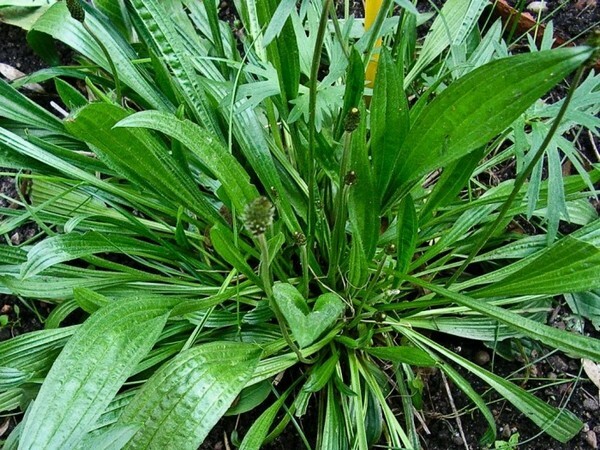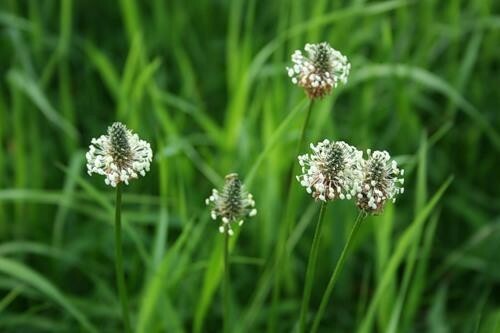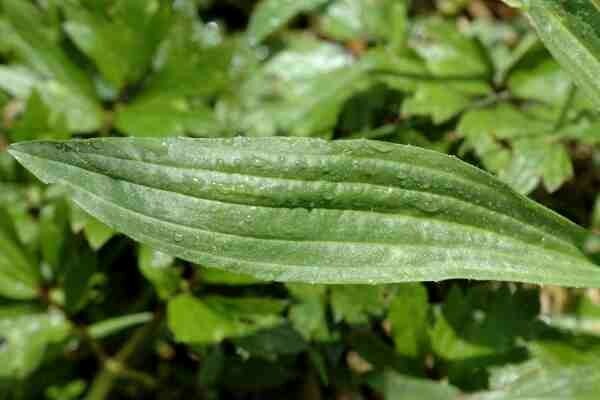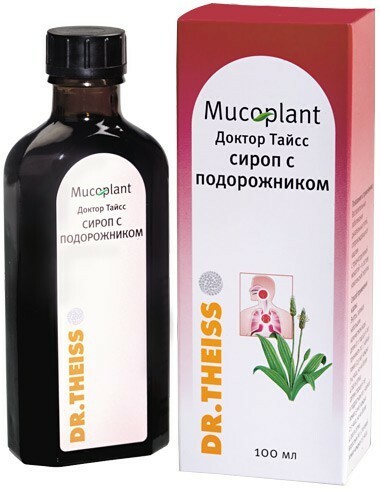- Botanical Description
- Chemical Composition
- Therapeutic Properties
- Methods of Application
Plantain Lanceolithic or lanceolate - a perennial herb that is botanically classified to the Podorozhnikov family. Like some other representatives of the genus Plantain, this plant has long been widely used in folk medicine in many countries. In natural conditions, it grows in temperate zones, on the territory of Ukraine, Belarus, the European part of Russia, Western Siberia, the Far East, the Caucasus, Central Asia, India, China, North Africa and America, often in conjunction with plantain large andthe average. For the preparation of medicinal products, leaves, seeds and roots of plantain lanceolithon, which contain many useful compounds can be used. The foliage lanceolate was named after an arzhenik, a stitch, a goat, a companion, mare stec, a hive, dog tongues, etc.

Botanical description of
In natural conditions, lanceolate plantain can be found along roads, river banks, meadows, forest clearings, clearings and glades, in gardens and orchards. It prefers rich fertile soils rich in carbonates, it easily germinates in a dense soil, which is dense in consistency, where many walk or drive. Propagated by seeds.
The height of the plant can reach 50 cm. Root stem. Rhizome vertical, short, thick, woody. Annually forms a rosette of radical leaves.
The leaves are located on long petioles. According to the botanical description, in the plantain of the lanceolate leaf blade has an elongated lanceolate form about 15 cm long and 2 - 2.5 cm wide, which is divided by 3 to 7 practically parallel major veins. Leaves can be with integral edges or with small denticles; there is pubescence along their veins along the lines of veins.
The stem( flower arrow) grows from the center of the root leaf rosette. It is erect, without leaves, covered with small hairs. The cross-sectional shape is ribbed, with five longitudinal grooves.

Flowering begins in May. Flowers are bisexual, small, pleated, in color white with a light brown tinge, with long stamens and yellow anthers. They have small bracts of ovate form, equal in length to the calyx. Calyx four-parted, with obovate lobes. The flowers are collected in the inflorescence - a long, dense cylindrical tapering upward ear 7 cm long atop the stem.
Fruits ripen from July to September. They are two-caved two-seeded boxes of oblong form with a pointed end. Seeds oblong, elliptical, with concave on the inside, and convex with the outside. Have good germination, which persists in the soil for more than 10 years.
Interesting: Plantain lanceolate can easily clog the crops of some perennial grasses( alfalfa, clover) and grain crops, which creates certain inconveniences. For the prevention of self-seeding it is recommended to cut flowers of the plant immediately after flowering.
Chemical Composition
For medicinal purposes, leaves, seeds and roots of plantain lanceolate are used, which differ somewhat in chemical composition. The leaves contain:
- glycoside aucubin;
- flavonoids;
- iridoids;
- enzymes( invert, emulsion);
- tanning agents;
- saponins;
- bitterness;
- minerals( potassium, zinc, germanium);
- vitamins and provitamins( carotene, vitamins C and K);
- organic acids( fumaric, vanillic, ferulic, chlorogenic, p-hydroxybenzoic, etc.).
Useful properties
Plantain lanceolate is characterized by the following medicinal properties:
- anti-inflammatory effect;
- diuretic effect;
- acceleration of wound healing;
- hemostatic effect;
- stops the growth of pathogenic bacteria;
- removal of spasms of smooth muscles;
- stimulation of secretory activity of the gastrointestinal tract;
- expectorant and enveloping action.

Leaves of plants in the form of broths, infusions, extracts and fresh juice are used for inflammation of the mucosa of different parts of the intestine( enteritis, colitis, enterocolitis), peptic ulcer disease, liver pathologies, bronchitis, pulmonary tuberculosis, anemia, hemorrhoids andallergic conjunctivitis. Outer in the form of rinses and rinses they are used for ulcers, purulent wounds, furunculosis, gingivitis. Seeds and inflorescences of plants in the form of broth and in fried condition in folk medicine are used as an enveloping agent for digestive disorders. Infusion of seeds helps to eliminate constipation. Decoction of lanceolate plantain roots has a diuretic effect, so it can be used for diseases of the urinary system and the removal of intoxication of the body.
Leaves of lanceolate plantain are effective in the treatment of cough caused by catarrhal phenomena, bronchitis, asthma attack, whooping cough, cold and acute respiratory infections. To eliminate such an unpleasant symptom, they prepare teas, infusions, decoctions, and also allocate fresh juice. By their action, these funds resemble a mother-and-stepmother. They soften irritation and reduce inflammation in the upper respiratory tract, throat and mouth, reduce the viscosity of the bronchial secretion and facilitate its natural evacuation by coughing.
Interesting: Young leaves of plantain lanceolate, as well as plantain large, in fresh form can be added to salads, cereals, purees and drinks. They are a valuable source of carbohydrates and organic acids for the body.
Freshly washed and wrinkled fresh leaves in the form of a compress are applied to wounds, abrasions, cuts, places of insect bites, furuncles, bruises. They relieve pain, irritation, itching and swelling, have bacteriostatic, wound-healing and anti-inflammatory effects. Freshly squeezed from the leaves of the plant juice have a blood-purifying and healing effect. It is often used to treat long-term healing wounds and ulcers on the skin. The leaves of the plant can be used to treat hemorrhoids, especially in cases of hemorrhoidal bleeding. Girls and women they help to reduce blood loss with heavy menstruation. Hemostatic properties of the plant also help with bleeding gums.

Ways of using
For the preparation of folk remedies from the plantain of lanceolate raw materials it is necessary to collect during the flowering period. Leaves are carefully cut, and then dried outdoors under a canopy, in a ventilated room or dryer.
Warning: Plantain lanceolate should not be used for treatment of hyperacid gastritis, during peptic ulcer exacerbations, allergy to the plant, and in conjunction with drugs that reduce sputum production
Leaf infusion
Leaf of plantain( 1 tablespoon with a slide) is brewed with a glassboiling water, cover with a lid and leave for 2 hours. Filter, the received herbal solution is taken for 30 ml for half an hour three times a day before meals. This remedy is effective in inflammation of the mucosa of different parts of the digestive tract, peptic ulcer and bronchitis.
Seed infusion
Seeds( 1 tbsp.) Pour 100 ml of boiling water, insist 30 minutes. Stir and take as a laxative in colitis and constipation of various origin in the morning and evening.
Means for lung and stomach cancer
Fresh leaves are washed under running water, cut with a knife and mixed with an equal amount of honey or sugar. Take 1 tbsp.l.three times a day, washing down with a small portion of water. Still it is possible to drink simply fresh juice of leaves of a plant on 1 item.l.20 minutes before meals 3 times a day.
Wound, bruises, bruises treatment tool
Dried leaves of plantain lanceolate( 5 g) pour 400 ml of boiling water, insist 2 h and filter. The resulting solution washes the wounds or make lotions on the sore spots, impregnating them with a folded several times gauze.
Appearance of plantain lanceolate:
